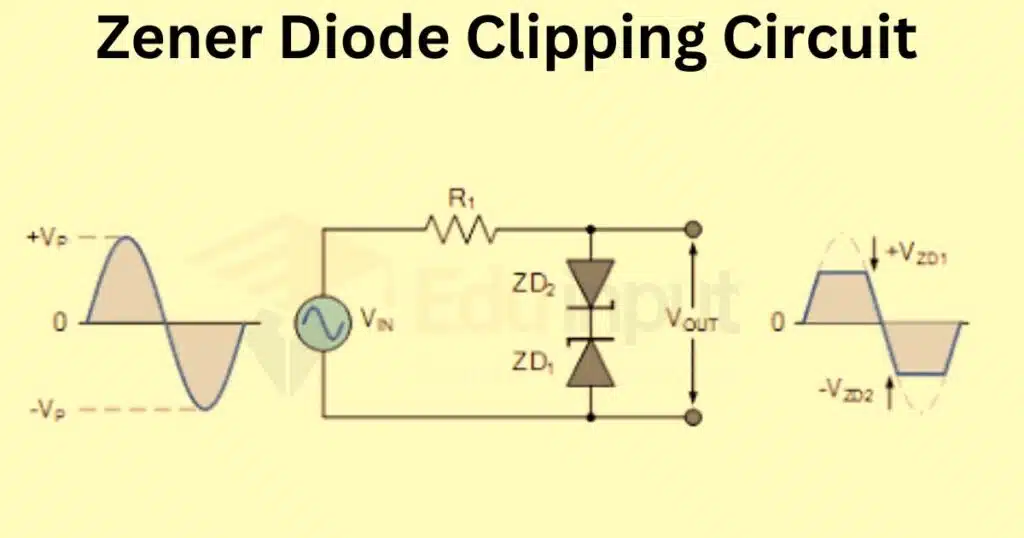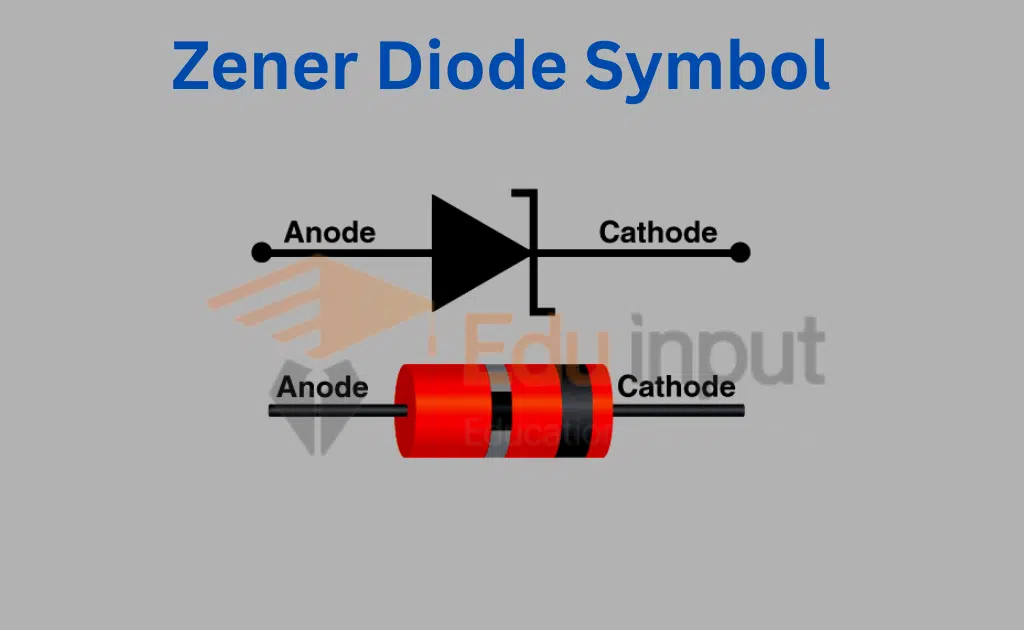How Zener diode used for Signal Clipping?
A Zener diode can be used in a signal clipping circuit to limit the amplitude of a waveform.
When a signal is applied to a Zener diode in reverse bias, the Zener diode will not conduct until the voltage across it reaches its breakdown voltage (Zener voltage). Once the voltage exceeds the Zener voltage, the Zener diode will conduct heavily, limiting the voltage across the diode to the Zener voltage.

In a signal clipping circuit, a Zener diode is connected in parallel with a signal source, with the anode of the diode connected to the input signal and the cathode connected to the ground. When the input signal exceeds the Zener voltage of the diode, the diode will conduct. And limit the voltage across the signal source to the Zener voltage, effectively clipping the waveform at that voltage.
For example, if a Zener diode with a Zener voltage of 5 volts is connected in parallel with an input signal ranging between 0 and 10 volts, the output waveform will be clipped at 5 volts. Any part of the waveform that exceeds 5 volts will be limited to 5 volts by the Zener diode.
Signal clipping circuits are commonly used in audio amplifiers and other circuits where it is desirable to limit the amplitude of a waveform. Using a Zener diode in such circuits provides a simple and effective way to clip the signal without additional components.






Leave a Reply